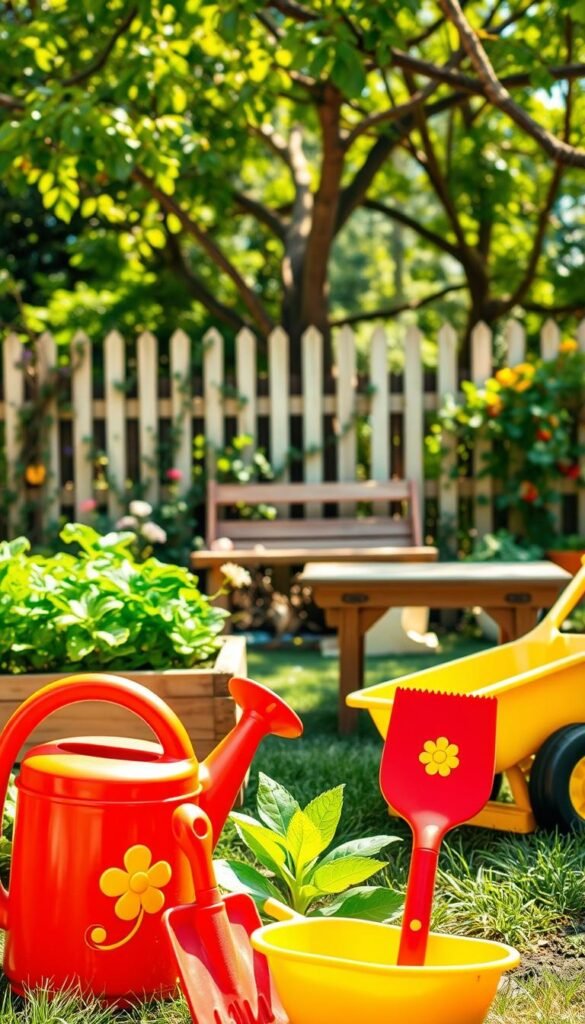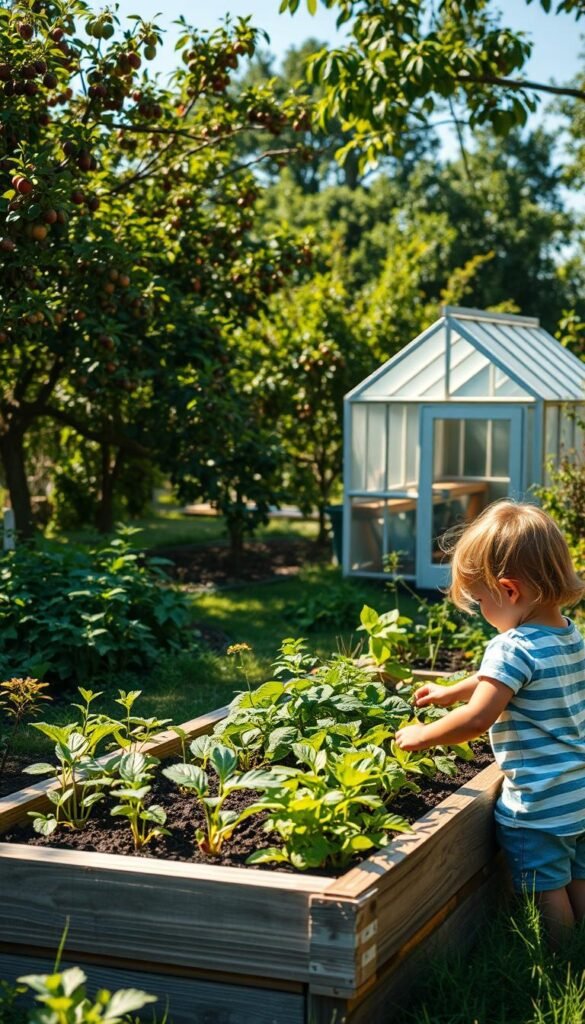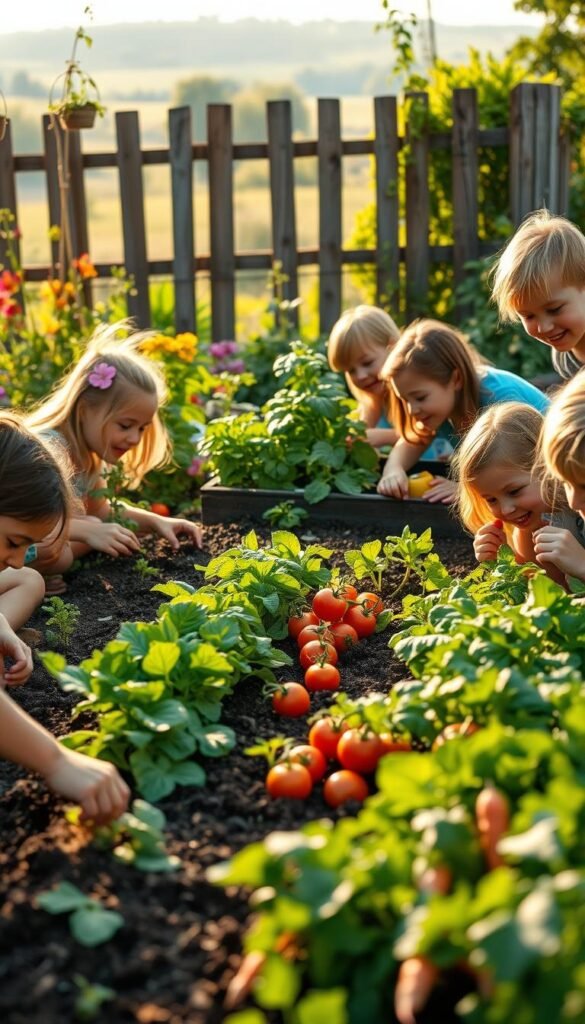Ever wondered how to turn snack time into a learning adventure? Getting your hands dirty together might just be the answer. Research from Baylor College of Medicine shows that digging into soil and planting seeds isn’t just fun—it’s a powerful way to boost your child’s curiosity about science and nutrition. As dietitian Alicia Beltran explains, this shared experience strengthens family bonds while nurturing kids’ emotional growth.
When young ones grow their own veggies, they’re 53% more likely to try new foods, according to studies. Imagine your picky eater suddenly excited about kale because they helped it sprout! This hands-on approach does more than improve diets—it builds responsibility as they water plants and track growth, creating pride with every new leaf.
You don’t need a backyard to start. A single pot of herbs can become a classroom where kids discover nature’s rhythms. Through simple growing projects, they’ll learn patience as seeds transform and confidence as they harvest what they’ve nurtured. Plus, sunlight and fresh air give everyone a natural vitamin D boost while making memories.
This isn’t just about plants—it’s about connection. As your family tends green spaces together, you’ll create traditions that outlast any growing season. Children develop respect for the earth’s cycles, understanding how their care impacts living things. Ready to watch curiosity bloom alongside your basil or tomatoes?
Start Your Kid-Friendly Garden Journey

Ready to watch your child’s eyes light up at the first sprout? Creating a family-friendly growing space begins with smart planning. Pick a sunny spot near their play area – they’ll love checking progress between games. Aim for 6+ hours of daily sunlight and soil that drains easily after rain.
Smart Setup for Little Hands
Clear the ground together, turning soil with child-sized forks. Mix in compost like a science experiment – worms become instant celebrities! Start with fast-growing plants: basil sprouts in 5 days, cherry tomatoes ripen fast. “Quick results keep young growers hooked,” notes educator Maria Cortez.
| Tool | Purpose | Age Recommendation |
|---|---|---|
| Hand Trowel | Digging small holes | 4+ |
| Watering Can | Gentle plant hydration | 3+ (with help) |
| Measuring Tape | Tracking growth progress | 6+ |
Growing Excitement Naturally
Let kids harvest their own vegetables once ready – it builds pride in their work. Assign daily watering roles using colorful charts. Celebrate each new leaf together, creating routines that blend learning with laughter.
Gardening Activities for Kids That Encourage Healthy Eating

Imagine transforming mealtime debates into moments of pride and discovery. When young hands bury seeds in soil, they’re planting more than radishes – they’re cultivating lifelong healthy eating habits through direct experience with nature’s pantry.
From Soil to Supper Table
Research shows young growers are 72% more likely to taste unfamiliar veggies they’ve nurtured from seed. “The dirt under their nails becomes a badge of culinary courage,” explains pediatric nutritionist Dr. Ellen Torres. This hands-on activity transforms abstract nutrition facts into tangible results – plump tomatoes bursting with vitamin C, leafy greens packed with iron.
Cultivating Conscious Choices
Tracking a plant’s growth through weekly observations teaches more than biology. Children discover how sunlight and water become the building blocks of crunchy snacks. When harvest day arrives, let them create colorful plates with their bounty:
- Rainbow salad with homegrown lettuce and cherry tomatoes
- Zucchini pizza bites topped with basil from their windowsill
- Sweet strawberry-mint infused water
These edible achievements reinforce positive eating habits better than any lecture. As they munch their creations, they’re not just feeding bodies – they’re nourishing curiosity about the natural world.
Seasonal Gardening Projects to Spark Interest

What if your backyard could become a living color wheel? Seasonal growing adventures let families explore nature’s changing rhythms while creating edible masterpieces. These hands-on gardening projects turn limited spaces into vibrant classrooms where every container tells a story.
Creating a Rainbow Garden: Colorful and Fun
Transform a corner of your yard or balcony into a chromatic wonder. Start with red cherry tomatoes and purple eggplant, then fill gaps with orange nasturtiums and blue borage flowers. Kids enjoy hunting for unusual varieties like golden beets or striped dragon carrots to complete their spectrum. “Colorful harvests make nutrition visual and exciting,” says school garden coordinator Lila Nguyen.
Rotate crops seasonally—swap spring peas for summer yellow squash, autumn purple kale for winter red chard. This teaches young growers about plant life cycles while keeping their plates vibrant year-round.
Container Gardens for Limited Spaces
Upcycle old rain boots, tin buckets, or ceramic pots into portable vegetable gardens. Herbs thrive in shallow containers, while deep planters suit carrots and radishes. Follow these simple rules:
- Leave 3 inches between seedlings
- Use pots with drainage holes
- Refresh soil between plantings
When roots outgrow their homes, show children how to gently divide plants into new containers. This hands-on activity builds responsibility as they monitor their green friends’ needs. Even apartment dwellers can grow salad greens in window boxes, proving fresh food needs no farmland.
Nurturing Healthy Eating Through Gardening
What if your kitchen table became a showcase of nature’s vibrant bounty? Connecting soil to supper helps young minds grasp how fresh plants fuel their bodies. When sprouts emerge from dirt they’ve tended, children see nutrition as something they create—not just consume.
From Backyard to Balanced Meals
Homegrown carrots pack 30% more vitamin A than store-bought ones, according to USDA studies. Kids who nibble snap peas straight from the vine absorb live enzymes that processed foods lack. This hands-on activity turns mealtimes into discovery sessions about antioxidants and minerals.
Rainbow-colored harvests teach why variety matters. Red tomatoes boost heart health, while dark greens build strong bones. Let them track how different vegetables affect their energy levels during playtime.
Families gain more than vitamins—they build healthy eating habits that last. Children who help grow food make better snack choices years later, research shows. Their understanding of the natural world grows alongside zucchini and strawberries, rooted in experiences no textbook can match.






